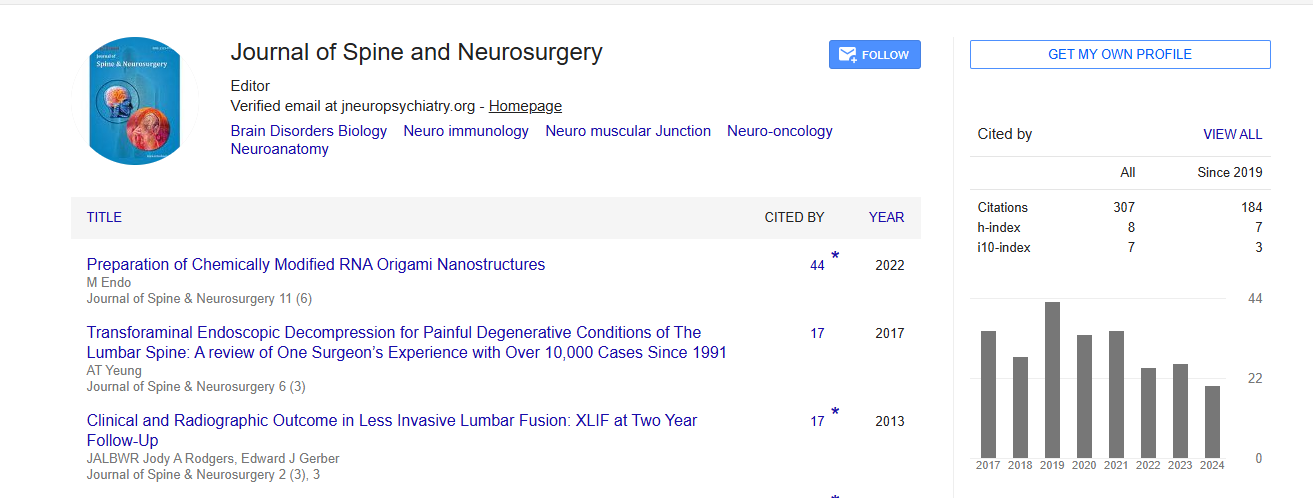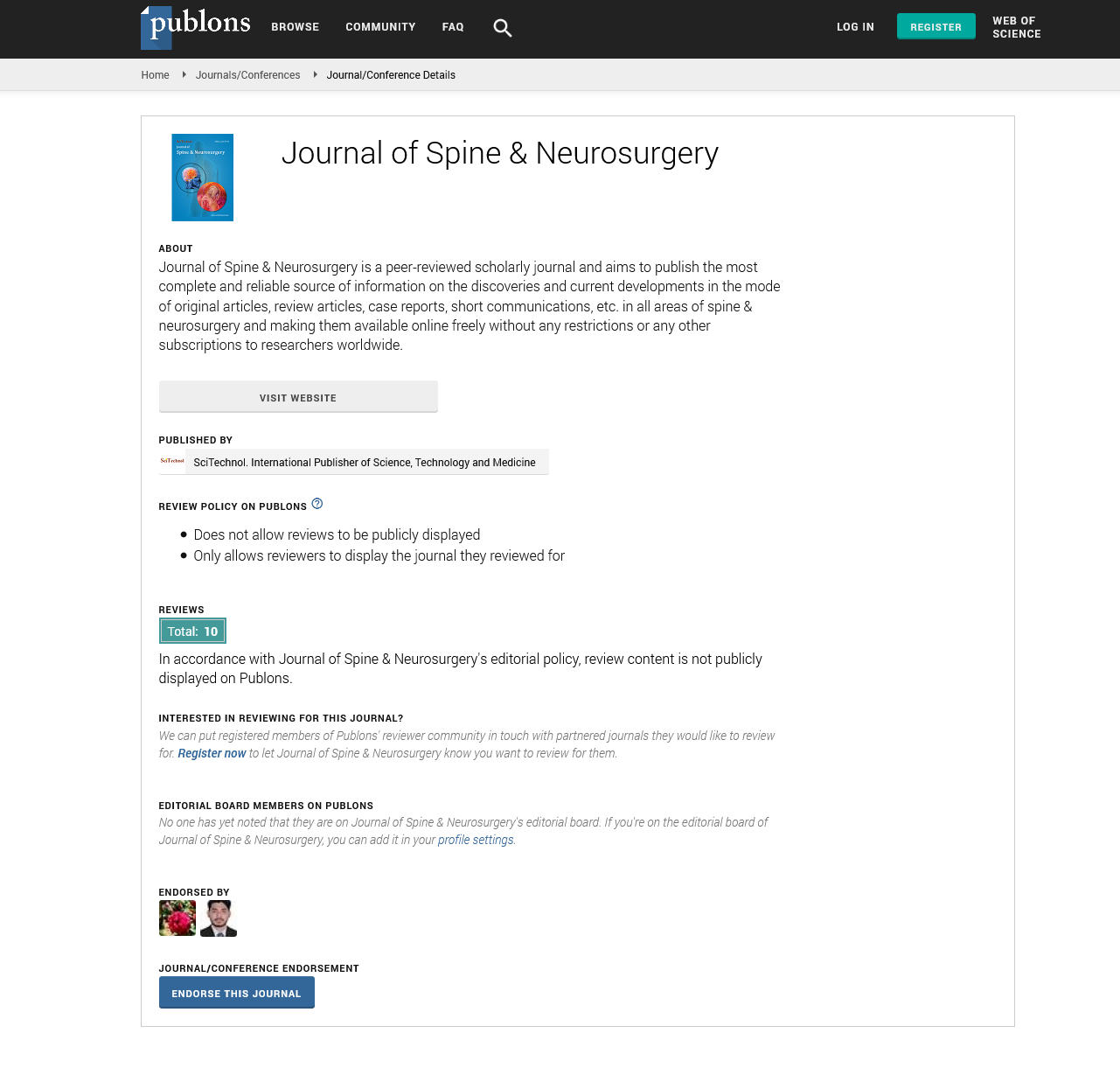Commentary, J Spine Neurosurg Vol: 12 Issue: 6
Navigating the Baroreflex: Understanding the Carotid Sinus
Akiko Nim*
1Department of Neurosurgery, Kurume University School of Medicine, Kurume, Fukuoka, Japan
*Corresponding Author: Akiko Nim,
Department of Neurosurgery, Kurume
University School of Medicine, Kurume, Fukuoka, Japan
E-mail: akiko_1nim@gmail.com
Received date: 27 November, 2023, Manuscript No. JSNS-24-128389;
Editor assigned date: 29 November, 2023, PreQC No. JSNS-24-128389 (PQ);
Reviewed date: 14 December, 2023, QC No. JSNS-24-128389;
Revised date: 21 December, 2023, Manuscript No. JSNS-24-128389 (R);
Published date: 28 December, 2023, DOI: 10.4172/2325-9701.1000185.
Citation: Nim K (2023) Navigating the Baroreflex: Understanding the Carotid Sinus. J Spine Neurosurg 12:6.
Description
The carotid sinus, a small but vital structure located in the carotid artery, plays a pivotal role in regulating blood pressure and maintaining cardiovascular homeostasis. As a part of the baroreceptor system, the carotid sinus responds to changes in blood pressure, sending signals to the central nervous system to modulate heart rate and vascular tone. This aims to unravel the significance of the carotid sinus, exploring its anatomy, function, and its role in the complex of physiological mechanisms that govern blood pressure. The carotid sinus is a dilated area located at the bifurcation of the common carotid artery, typically on both sides of the neck. It is positioned at the point where the common carotid artery divides into the internal and external carotid arteries. Within the carotid sinus, specialized cells known as baroreceptors are scattered across the arterial wall. These baroreceptor cells are sensitive to changes in blood pressure and stretch.
Function of the carotid sinus
Baroreceptors within the carotid sinus constantly monitor blood pressure. They are particularly sensitive to changes in arterial stretch, which occurs when blood pressure fluctuates. When blood pressure rises, the baroreceptors in the carotid sinus are stimulated. They send signals to the brainstem, specifically the medulla oblongata, which, in turn, modulates the activity of the autonomic nervous system. Increased blood pressure leads to vagal stimulation, causing a reduction in heart rate (bradycardia) and vasodilation. These responses work together to decrease blood pressure and restore balance. Conversely, when blood pressure decreases, the baroreceptors signal the brainstem to activate the sympathetic nervous system. This results in an increased heart rate (tachycardia) and vasoconstriction, aiming to elevate blood pressure.
Clinical significance
The carotid sinus, along with other baroreceptors in the aortic arch, plays a crucial role in the short-term regulation of blood pressure. This rapid response system helps maintain stability in the face of sudden changes in posture or activity. Dysfunction in the carotid sinus reflex can lead to orthostatic hypotension, where changes in posture cause a rapid drop in blood pressure. This may result in dizziness, syncope (fainting), or lightheadedness. Carotid sinus syndrome is a condition where pressure on the carotid sinus, such as during neck movement or tight collars, triggers an exaggerated response, causing bradycardia and hypotension. This can result in fainting and requires medical evaluation. In certain medical settings, carotid sinus massage may be used as a diagnostic tool to evaluate carotid sinus hypersensitivity. This involves applying gentle pressure to the carotid sinus to stimulate the baroreceptor reflex.
Conclusion
The carotid sinus, a relatively small structure nestled in the neck, holds significant power over the intricate amount of blood pressure regulation. Its role as a key component of the baroreceptor system highlights the body's remarkable ability to adapt to the ever-changing demands of daily life. The carotid sinus ensures that blood pressure remains within the narrow range necessary for optimal organ perfusion and overall physiological balance. Understanding the function of the carotid sinus provides insights into the delicate mechanisms that underlie cardiovascular health and the intricate work composed by the body's regulatory systems.
 Spanish
Spanish  Chinese
Chinese  Russian
Russian  German
German  French
French  Japanese
Japanese  Portuguese
Portuguese  Hindi
Hindi 
